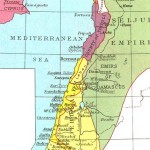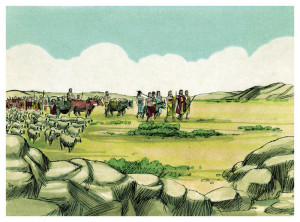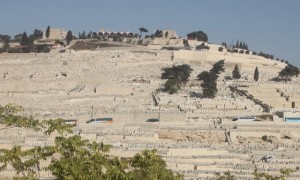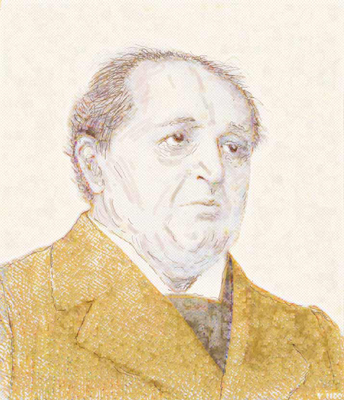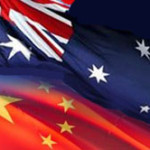God wil het! – XII – Reizen in het spoor van de kruisvaarder
Libanon: Land van ruïnes
Tot 1941 was Libanon een deel van Syrië. Na de ondergang van het Turkse Ottomaanse rijktijdens de Eerste Wereldoorlog ontstond onder Frans beheer Groot-Syrië dat na een aantal opstanden in 1925 door de Fransen om strategische redenen in vieren werd opgedeeld. Een van de delen werd Libanon dat uiteindelijk, kort na Syrië, in december 1941 een autonome staat werd. De Fransen verdwenen in 1946 definitief uit dit gebied. Read more
God wil het! – XIII – Reizen in het spoor van de kruisvaarder
Israël: het land van belofte
Ongeveer 1800 jaar v. Chr. leidde Abraham een groep nomaden, van Mesopotamië naar de bergen van Kanaän in Palestina. Tijdens een hongersnood trokken ze verder naar Egypte, van waar ze rond 1250 v. Chr. onder leiding van Mozes de weg terug aflegden en opnieuw de bergstreken van Kanaän bevolkten. De Israëlieten stichtten een koninkrijk en kozen als eerste koning Saul (1023-1004 v. Chr.), die door zijn geadopteerde zoon David werd opgevolgd. David veroverde in 997 v. Chr. Jeruzalem en maakte daar de hoofdstad van zijn koninkrijk van. David werd opgevolgd door zijn zoon Salomon (965-928 v. Chr.). Tijdens zijn regering werd de eerste tempel gebouwd. Na Salomons dood werd het koninkrijk in twee delen opgesplitst: Israël en Juda. Rond 721 v. Chr. werd Israël door de Assyriërs veroverd. De Israëliërs verstrooiden zich en dit was het begin van de joodse diaspora, de wereldwijde verspreiding van joodse gemeenschappen. Juda werd in 587 v. Chr. Veroverd door de Babyloniërs (586-538), die Jeruzalem en de tempel verwoestten. Read more
God wil het! – XIV – Reizen in het spoor van de kruisvaarder
Jeruzalem: God wil het!
‘Jeruzalem sla uw ogen op en zie de bevrijder,
die uw boeien komt verbreken’ (Jesaja)
Vanuit de richting van Bethlehem trok het kruisleger door de heuvels van Judea naar Jeruzalem. Vanaf de Olijfberg keken ze neer op de muren en de heiligdommen van de oude stad, die net als in onze tijd verdeeld was in vier wijken: voor moslims, joden, Armeense christenen en Latijnse en orthodoxe christenen. De ongeveer vijfduizend christenen wonen tegenwoordig in de nabije omgeving van de Heilige-Grafkerk, de plaats waar Jezus zou zijn begraven na zijn kruisiging. Hier bevinden zich ook hun kerken, kloosters en pelgrimshuizen. De Franciscanen zijn de belangrijkste vertegenwoordigers van de Latijnse christenen en regelen hun zaken vanuit hun hoofdkwartier in het klooster van de Heilige Verlosser in de omgeving van de Jaffa poort. Met de Latijnen zijn de Grieks-Orthodoxen de meest dominant aanwezige christenen in het straatbeeld en in de wijk rond de Nieuwe poort bewoont hun kerkelijke elite de fraaiste huizen van de oude stad. Kleinere gemeenschappen zoals de Kopten, de Protestanten en de Ethiopiërs leven meer teruggetrokken in gebouwen die soms nog dateren uit de tijd van het vroegste christendom. De Ethiopische monniken wonen tussen de ruïnes van een door de kruisvaarders gebouwd klooster dat tegen de Heilige Grafkerk is aangebouwd. De Armenen namen aan het begin van de vierde eeuw als eersten het christendom aan en bewonen een van de grootste en ruimst opgezette wijken van de oude stad. Read more
Abraham Kuyper and his South African Brethren
A smile of satisfaction must have appeared on Abraham Kuyper’s broad face while reading the letter that he had just received. It came from distant South Africa, and communicated congratulations from the governors of the Paarl Gymnasium on the opening of the Vrije Universiteit three months previously.
‘Devoted as we are to pure Reformed doctrine’, wrote chairman S.J. du Toit, ‘even at this southern outpost of the world, it gives us reason to glorify God’s holy name for placing this doctrine on the lamp stand through your work’.
Pious and hearty words, to which Kuyper could not but say ‘amen’. Besides, S.J. du Toit was not just anybody. Despite his youthfulness – he was not yet 34 years old, ten years younger than Kuyper himself – he was an extremely influential man in South Africa: he was a clergyman and author, founder of the Genootskap van Regte Afrikaners (1875), editor in chief of Di Patriot (1876) and founder of the Afrikaner Bond (1879). Everything pointed to the Afrikaners taking the lead in South Africa in the course of the following years, under the powerful leadership of this front man for the population of Hollandsch-Afrikanen at the Cape Colony. Moreover, Du Toit was Reformed, an opponent to liberalism in the NGK and in society in general, and an advocate for Christian schooling. In the letter of congratulation from Du Toit, therefore, Kuyper could read a declaration of support from a brother, a kindred spirit and an ally. Read more
POEM: The Vrije Universiteit And South Africa: 125 Years Of Sentiments And Good Faith
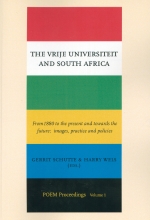 This academic year (2005), the Vrije Universiteit enjoys its 125th anniversary.[1] In 1879, a handful of orthodox reformed Dutch gentlemen founded an Association for the advancement of Christian Higher Education, and on 20 October 1880, Abraham Kuyper inaugurated the Vrije Universiteit, Academia libera reformata, by delivering his famous lecture on Sphere Sovereignty, Soevereiniteit in eigen kring.
This academic year (2005), the Vrije Universiteit enjoys its 125th anniversary.[1] In 1879, a handful of orthodox reformed Dutch gentlemen founded an Association for the advancement of Christian Higher Education, and on 20 October 1880, Abraham Kuyper inaugurated the Vrije Universiteit, Academia libera reformata, by delivering his famous lecture on Sphere Sovereignty, Soevereiniteit in eigen kring.
Kuyper was never a very modest man, and he certainly was not inclined to be modest at that moment. The credits of the university he opened, were three faculties, five professors and five students. As an accomplished rhetorician he described it as onze kleine School, met den Universiteitsnaam zelve tot blozens toe verlegen (our small school, blushing to be called a university). This was not meant as an apology, but rather to make a Hegelian turn: the real credits of the VU were written in the Synod of Dordt, its claim to nobility was the courage and moral dedication of its supporters, and its worldwide value and importance (Kuyper 1880). In the Kuyperian world panorama, his University would become the intellectual centre of the international Calvinist world – the academic power-house for all the reformed churches, nations and societies in Europe, America, and the Dutch colonies in the East. And for South Africa, of course.
October 1880: this is also the month in which Piet Cronjé, on behalf of 127 Transvaler burghers, declared to the Landdrost of Potchefstroom that they would no longer pay any taxes to the British government, as that government had illegally annexed and stolen their country (Van Oordt 1898). His language was quite akin to what Abraham Kuyper had written as a commentary on Shepstone’s annexation of the Transvaal in 1877, when he stated in his daily De Standaard: robbery is a sin to the eyes of the Lord, even by a crowned robber. Read more
POEM: ‘New’ Scientific Practice In South Africa With Special Reference To Land Reform
 ..training new generations of scientists and technologists oriented towards the solving of real problems (White Paper on Science and Technology 1996).
..training new generations of scientists and technologists oriented towards the solving of real problems (White Paper on Science and Technology 1996).
The SandT capacity of the country is running as fast as it can, but is still losing ground (National Research and Development Strategy 2000).
Introduction
(2005) The landscape of scientific practice and higher education in South Africa has changed drastically since 2 February 1990. The changes that occurred in these fields during the last decade of the 20th century were probably the most incisive in the history of science and higher education in South Africa.
When the democratically elected government came into power in 1994, science was confronted with two main challenges, namely to transform the system so that the welfare of all the inhabitants could be promoted and to make South Africa competitive in a globalising world.
The new government inherited a sound science infrastructure. It was a widely dispersed and uncoordinated system in which scientists enjoyed international recognition for transplanting hearts and for enabling the deepest exploitation of mines in the world. However, the system was mainly directed at the promotion of the welfare of the white community and was strongly focussed on military defence; the provision of energy and food; and the combating of diseases.[1]
In this transformation process, South Africa was very receptive to theories, models and schools of thought. Expertise from abroad was not provided in all instances without direct or subtle influence. There are already indications that certain models, that were applied successfully elsewhere, cannot be transferred without adaptations to the South African situation, where complex issues have to be addressed. The question that arises is whether the government implements the policy documents that were designed by intellectuals who are not part of the bureaucracy. Read more
